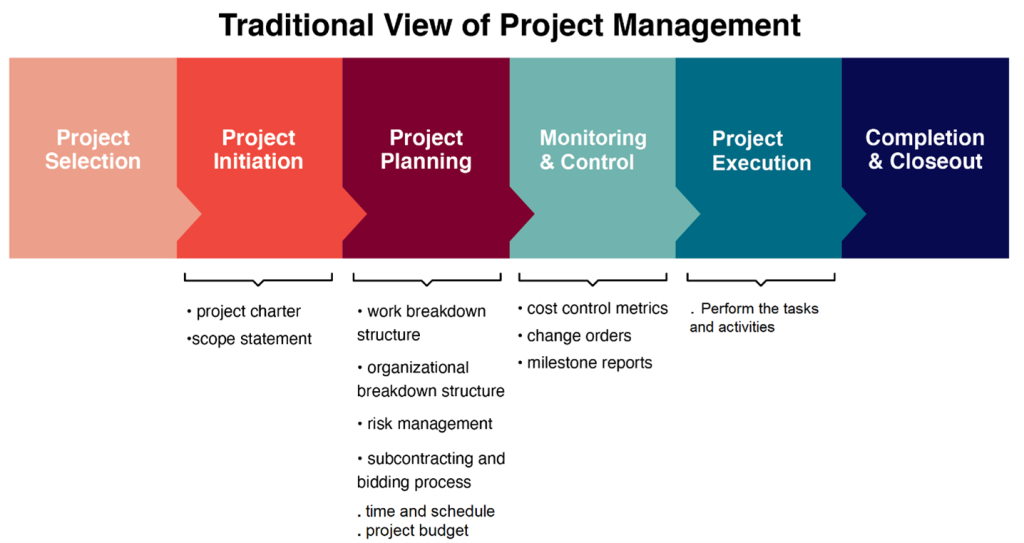2.2. Initiation
Project management has a dual nature; it is both a series of distinct phases with a clear beginning and end and a continuous, circular process in which each end leads to a new beginning. Throughout a project, a successful project manager strives to anticipate changing conditions rather than simply responding to them as they arise.
Let’s start with the more traditional view, which describes project management as a series of sequential phases, with project initiation coming right after project selection. You can think of these phases, shown in Figure 2.1, as the particle nature of project management.
However, while project initiation marks the official beginning of a project, doing it well also requires looking past the making stage to the entire life cycle of the project’s end result. You can think of this as the wave nature of project management. As illustrated in Figure 2.1, the making stage, in which a project is initiated and executed, is one part of the larger cycle that includes the operating/using/changing stage, in which the customer makes use of the project. Finally, the demolishing stage is when the project is retired so it can be replaced by something new and better.

“3.2. Initiation” from Essentials of Project Management by Adam Farag is licensed under a Creative Commons Attribution-NonCommercial-ShareAlike 4.0 International License, except where otherwise noted. Modifications: moved from Chapter 3.

